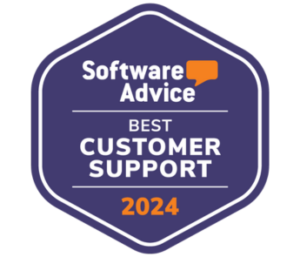What Is a Cloud-Based ERP and How Does It Work? A Modern Guide for Growing Manufacturers and Distributors
The Manufacturing World Has Changed — Has Your Software?
Walk into almost any warehouse or production floor today, and you’ll hear the same story:
Operations are busier than ever, customer expectations are higher than ever, and spreadsheets just can’t keep up.
For growing manufacturers and distributors, the real bottleneck isn’t in the warehouse — it’s in the software.
That’s why so many are making the move to cloud-based ERP systems like Kechie.
Cloud ERP isn’t just another tech buzzword. It’s a complete shift in how businesses run their day-to-day operations, manage data, and make decisions. It’s what happens when modern software finally catches up with how fast you need to move.
So, What Exactly Is a Cloud-Based ERP?
Let’s start simple.
ERP, or Enterprise Resource Planning, is the software that keeps your entire business connected — finance, inventory, purchasing, sales, production, customer management, and more.
A cloud-based ERP does everything a traditional ERP does, except it runs in the cloud — meaning it’s hosted online instead of on servers in your office.
That one difference changes everything.
No bulky hardware. No constant IT maintenance. No waiting for software updates or worrying about backups.
You log in from anywhere — whether you’re in the office, on the road, or walking the floor — and you’re in.
Cloud ERP systems like Kechie bring all your critical business data into one centralized platform, updated in real time. Every department sees the same truth — no version conflicts, no duplicate entries, and no surprises.
Why Manufacturers and Distributors Are Moving to the Cloud
The manufacturing and distribution sectors have always run on precision. But growth introduces complexity — more warehouses, more SKUs, more suppliers, more moving parts.
Traditional systems, especially on-premise ones, just can’t keep up with that pace.
Here are the biggest reasons why companies are making the switch:
1.Visibility You Can Actually Use
Imagine knowing your exact inventory levels, order status, and cash flow at any given moment — across every warehouse or location.
That’s the power of cloud ERP.
With real-time dashboards and reports, you don’t have to wait until the end of the week or month to see what’s really happening.
Kechie, for example, lets you track production runs, shipments, and financial metrics from one interface. You can spot bottlenecks before they turn into problems and make faster, smarter decisions.
2. It Grows When You Do
Growth should be exciting — not a logistical nightmare.
Cloud ERP scales naturally. Need to add a new warehouse? Hire a new sales team? Launch a new product line? You can expand your ERP with a few clicks instead of a full IT project.
That flexibility is crucial for distributors and manufacturers who often need to pivot quickly to meet customer demand or supply chain changes.
3. Fewer IT Headaches (and Costs)
Maintaining on-premise servers and outdated software is expensive — not just in dollars, but in time. Cloud ERP eliminates that overhead. Updates, backups, and security are handled by the provider.
Your team can focus on what they do best: building products, fulfilling orders, and growing the business.
4. A System That Moves as Fast as You Do
Because cloud ERP systems are web-based, your team can access information anytime, anywhere — whether they’re at a supplier site, customer meeting, or trade show.
Remote collaboration becomes seamless. Your sales, warehouse, and finance teams can finally stay in sync without endless email chains or spreadsheets.
How Does Cloud ERP Actually Work?
At a high level, a cloud-based ERP connects every part of your business through one central database hosted online.
Each department — from purchasing to accounting to operations — works from that same live data set.
Here’s a simplified view of how it all ties together:
1. Data Flows in Real Time
Every time an order is placed, inventory is updated, or a payment is processed, that data instantly updates across the entire system.
If a product ships out, accounting sees it, sales sees it, and the warehouse knows immediately — no lag, no duplicate entry.
2. Role-Based Access Keeps Things Secure
Each team or role gets access only to what they need. Warehouse staff can manage inventory. Finance handles ledgers. Executives see everything in summary.
Cloud ERPs like Kechie use enterprise-grade encryption and secure data centers to keep everything safe.
3. Modular Design Means Flexibility
You don’t have to buy everything at once.
Start with the core modules — like inventory, purchasing, and accounting — and add others (like CRM, manufacturing, or supply chain management) when you’re ready.
Kechie’s modular structure makes it easy to tailor the system to how your business actually works, not the other way around.
From Manual Processes to Real-Time Control
Let’s put this into perspective with a real-world scenario.
Say you’re a growing distributor managing three warehouses and hundreds of product SKUs. You rely on spreadsheets and a patchwork of legacy software to track orders, shipments, and inventory.
By the time your team reconciles the numbers, something’s already out of date.
Now imagine running all that through a cloud ERP like Kechie.
When an order comes in, inventory adjusts automatically. The purchasing module sees when it’s time to reorder. The warehouse gets pick-and-pack instructions instantly. Finance tracks the transaction in real time.
That’s not just automation — that’s control.
And it’s why distributors and manufacturers are embracing the cloud. They’re not just buying software; they’re building smarter, leaner operations.
Key Benefits of Cloud ERP (and Why They Matter)
1. Real-Time Insight for Faster Decisions
With a cloud ERP, you don’t wait for reports — you see everything as it happens. You know what’s selling, what’s stuck in production, and what needs attention.
That visibility helps leaders make proactive decisions instead of reactive ones.
2. Streamlined Inventory and Supply Chain Management
ERP systems like Kechie are designed for complex supply chains. They support FIFO tracking, barcode scanning, and serial number control. You can see exactly where every item is — from supplier to shelf — and plan production with confidence.
3. Lower Total Cost of Ownership
Forget about costly hardware or IT teams managing servers. With a subscription model, you pay for what you use and can scale up or down as needed.
No big upgrades, no surprise maintenance bills.
4. Seamless Integrations
Modern ERPs don’t exist in isolation. They integrate with your accounting, CRM, and eCommerce tools. For example, Kechie connects with systems like Shopify and QuickBooks Online, creating a unified data environment that saves time and prevents costly errors.
5. Security and Peace of Mind
Cloud ERP vendors invest heavily in cybersecurity. Your data is encrypted, backed up automatically, and stored in secure data centers — usually far more protected than an on-site server could ever be.
Migrating from On-Premise to Cloud: What to Expect
Moving to a new ERP system sounds intimidating, but it’s a lot smoother than most companies expect — especially when guided by experienced implementation partners.
Here’s what the process usually looks like:
1. Assess Your Current Systems — Identify what’s working, what isn’t, and where bottlenecks exist.
2. Set Clear Goals — Define what success looks like: faster order processing, better inventory accuracy, or improved reporting.
3. Plan Data Migration — Clean your data before importing it. It’s the best time to eliminate duplicates and outdated records.
4. Train Your Team — The best ERP is the one your team actually uses. Involve them early, provide role-based training, and gather feedback during rollout.
5. Go Live and Optimize — Once live, monitor performance and tweak workflows. With a cloud ERP like Kechie, updates and improvements are continuous.
The Future of ERP: Smart, Connected, and Data-Driven
ERP software isn’t just evolving — it’s transforming.
Here’s where things are headed:
- Artificial Intelligence (AI): Predictive analytics help forecast demand, optimize production schedules, and automate purchasing.
- IoT Connectivity: Machines and sensors feed live data directly into ERP systems for real-time monitoring.
- Automation Everywhere: From purchase orders to shipping notifications, manual tasks are being replaced by smart workflows.
- Deeper Customization: APIs allow businesses to connect ERP with specialized tools and build unique extensions.
Platforms like Kechie are already embedding these capabilities — making them not just management systems, but strategic growth engines.
Why Cloud ERP Is the Smartest Move for Growth
At some point, every growing manufacturer and distributor hits a wall — the one where spreadsheets, disconnected tools, and outdated systems start holding you back.
That’s when cloud ERP becomes more than a software choice. It becomes a growth strategy.
Cloud-based systems give you:
- Control of your entire operation in one place
- Real-time data to make better decisions
- Flexibility to scale without disruption
- Confidence that your technology will keep up with your ambition
In short, cloud ERP lets you focus on what you do best — building great products, delivering on time, and growing your business.
Final Thought
The businesses that thrive in the next decade won’t be the ones that work harder — they’ll be the ones that work smarter.
Cloud ERP solutions like Kechie make that possible by bringing together every piece of your operation into one intelligent, accessible system.
If your current tools are limiting your visibility or slowing your growth, it might be time to look at how cloud ERP can help you move faster, scale easier, and compete stronger.
Contact us today to learn more about how Kechie ERP can transform your inventory management practices!
In This Article
-So, What Exactly Is a Cloud-Based ERP?
-Why Manufacturers and Distributors Are Moving to the Cloud
-How Does Cloud ERP Actually Work?
-From Manual Processes to Real-Time Control
-Key Benefits of Cloud ERP
-Migrating from On-Premise to Cloud: What to Expect
-The Future of ERP: Smart, Connected, and Data-Driven
-Why Cloud ERP Is the Smartest Move for Growth











